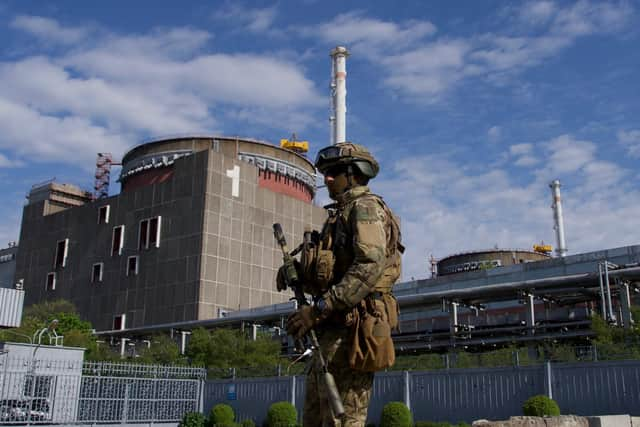Russia got a whole lot bigger, changing the complexion of the conflict with Ukraine - Patrick Mercer
Meanwhile, both Ukraine and the West have, quite rightly, yelped with indignation calling the process sham, the results illegal and saying that these regions will never be properly recognised. Now, whilst all of this might be repellant, Russia’s done it and the “Special Military Operation” has changed from a foreign adventure into a very struggle for existence for Russia as a whole.
But, how have we got to this place? Through Russian eyes - and I stress that this is through Russian eyes - the two, Russian speaking republics of Donetsk and Luhansk, collectively referred to as The Donbass, have been under assault from Ukraine since 2014 as both regions tried to break away from Kiev. There have been thousands of casualties with the fighting involving both Russian troops and NATO backed Ukrainians : it is tensions here which caused Moscow to invade. But, importantly, neither territory was formally recognised by President Putin until the end of February this year when a state of war existed.
Advertisement
Hide AdAdvertisement
Hide AdThen, as the campaign developed and swathes of land were taken by Russia that gave her a “land bridge” from the west of Donetsk right the way along the coast of the Sea of Azov and partially along the Black Sea coast as well, the creation of the nationalists’ dream of “Novorussiya” seemed to become a reality. In other words, the ancient concept of a colony of Russian speaking peoples which dominated the wealthy, naturally rich ports and pastures of south-eastern Ukraine and secured the north end of the Crimean peninsula was ready to be picked like a ripe plum.


So, back in the summer whilst things were going well on the battlefield for the Kremlin, referenda were planned not just for The Donbass, but for the sprawling Zaporizhzhia and Kherson oblasts as well which would ratify the situation just as happened in 2014 in Crimea. Back then, with hardly a shot fired, Russia, “liberated” an emotionally and strategically vital jewel from Ukraine before formalising it with a referendum and very little Western objection. Obviously, this model emboldened the Kremlin.
All looked set for early September. Russia is terribly hidebound by her laws and legal conventions and, whilst there was never going to be any doubt about the results of these referenda, it was important that due process should be observed and the thing be done properly in Russian eyes. The trouble was, Ukraine thought differently and pressed ahead, capturing land in Kherson and Kharkov and trying to seize the Zaporizhzhia nuclear power plant just as Russia was trying to stabilise things.
Now, these three counter-offensives were driven rather more by political than military imperatives. Certainly, Ukraine needed to take back land, cities and infrastructure, but she had to scupper the Kremlin’s plans to incorporate these new territories. Why was that so important? Well, once properly part of the Russian Federation, any act of aggression against them would become an assault on the Motherland.
Advertisement
Hide AdAdvertisement
Hide AdMoscow’s Regular Army with its conscripted elements could then, according to Russian law, be able to confront Ukraine directly.
To back this up, a partial mobilisation began and, crucially, a change in rhetoric. For President Putin the situation had been changed by overwhelming Western involvement not just in terms of arms supplies, but also by “foreign volunteers” who were at the forefront of all the assaults. Also, these newly acquired territories could now legally be defended by the use of weapons of mass destruction, hence the sudden talk of a nuclear exchange with President Putin looking squarely at the camera and telling the West that “he wasn’t bluffing”.
The trouble was, it was all hollow. After all, the Russian mainland had already been attacked, not just in Crimea, but also in Belgorod with no extraordinary reaction from the Kremlin - not even talk of nukes. And then, just as the referenda happened and the results were ratified, Ukrainian troops were romping around the very acres that were now, formally Russia. Russia’s ultimatum had been ignored and her bluff well and truly called.
Things suddenly seem to be going well for Kiev with Russia’s game changing tactics stymied. But, although that may be true in the short term, I believe we are now at a point of grave danger. Kiev has achieved some remarkable things on the battlefield and shown great, political resolve, but the cost has been enormous. Casualties numbers are being obscured, yet it’s clear that a whole generation of young Ukrainians lie dead; her reserves are fully deployed; most of her ammunition and weapons have been used up; railways and roads have been grievously damaged; her economy is groaning and winter has yet to begin.
Patrick Mercer is a former MP for Newark and Army colonel.